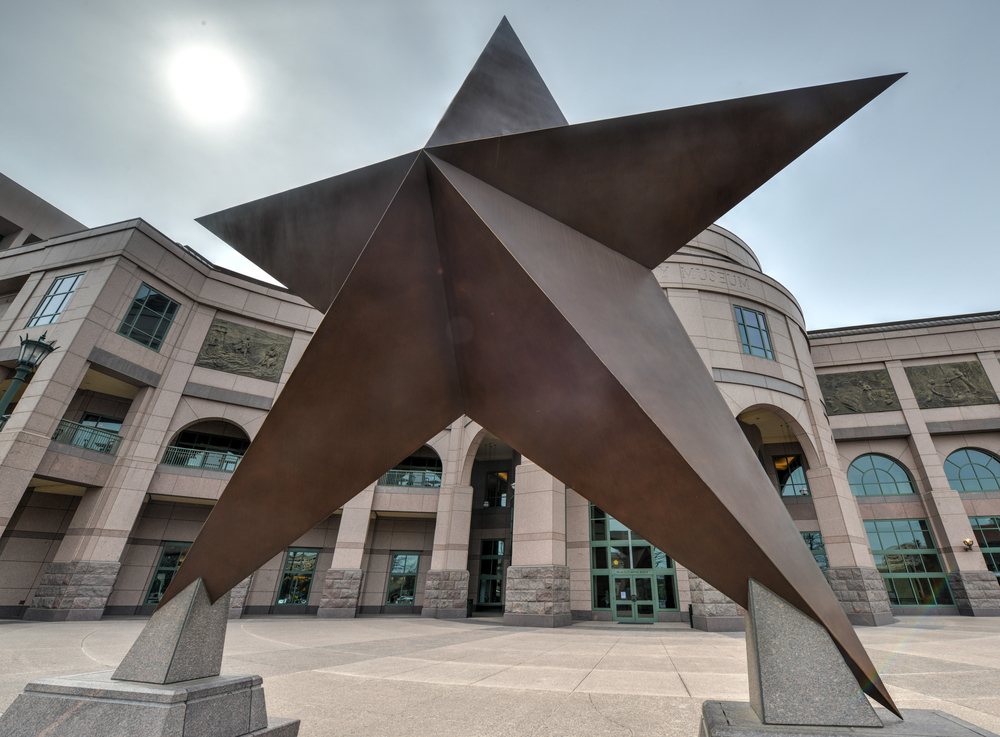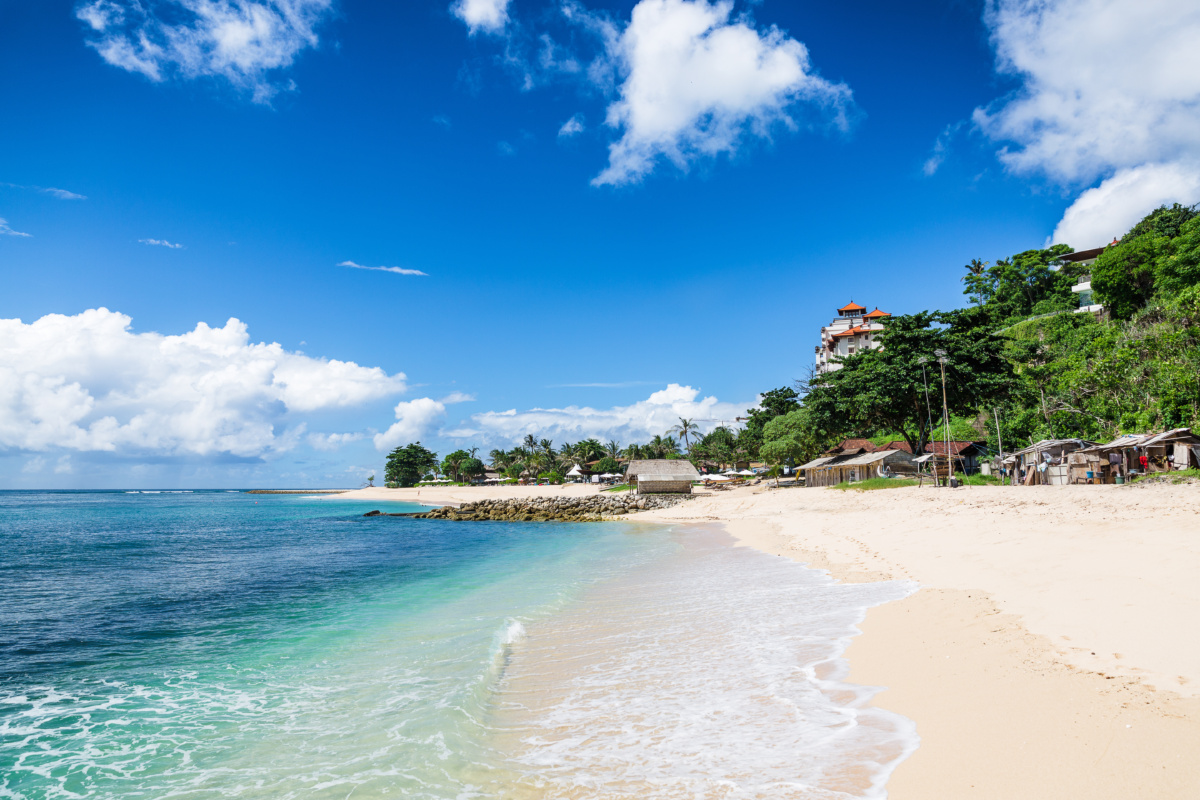With endless beauty in these waters, snorkeling in Puerto Rico has become a must for any snorkeling enthusiast. The beautiful Caribbean, the vibrant reefs and diverse marine life await any snorkeler or scuba diver lucky enough to explore these waters.
Puerto Rico is a US territory with one major island and several smaller ones, allowing you to pick from great destinations for the best snorkeling experience. When it comes to snorkeling in Puerto Rico, there are at least seven sites to explore.
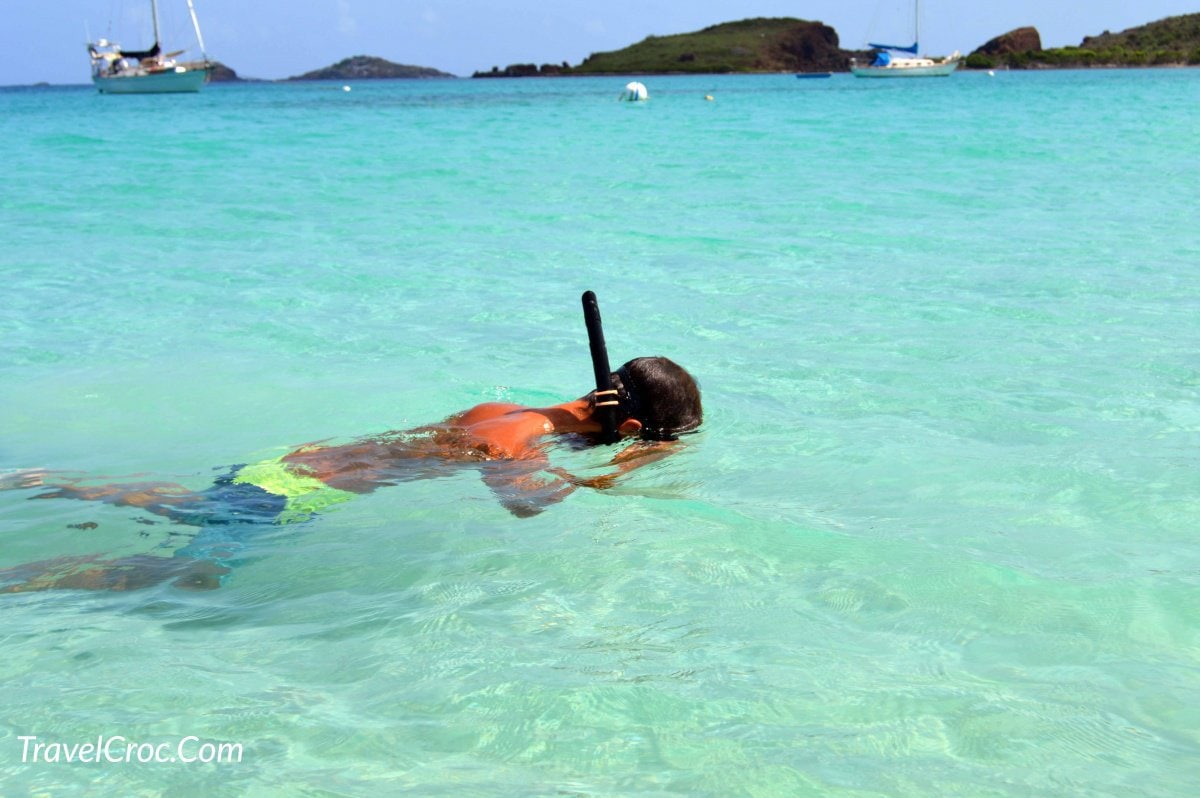
I want to tell you about the best snorkeling beaches in Puerto Rico, but first, you should know why snorkeling in Puerto Rico is a must-do activity.
Not only will you discover colorful marine life below the surface and explore the amazing sandy beaches. But also Snorkeling conditions are excellent with at least 45 feet to 65 feet or 14 to 20 meters deep ocean to explore. The best time to go snorkeling is from October to May.
This is because the rainy season, May to October, can be sweltering, plus the rain can reduce visibility. You also need to be cautious regarding the hurricane and tropical storm season, which is highest between August and October.
The east and north coasts of Puerto Rico are perfect from January to March, while the west and south coast are better from December to March. It has to do with currents, water temperature, and visibility. The south side of Puerto Rico has an island fronting, which helps with a calmer Caribbean Sea plus better visibility.
The north to the north-eastern area is part of the Atlantic, always rougher water with stronger currents. Water temperatures during these months are typically 79 to 84 degrees Fahrenheit or 26 to 29 degrees Celsius.
Bioluminescent Bays in Puerto Rico
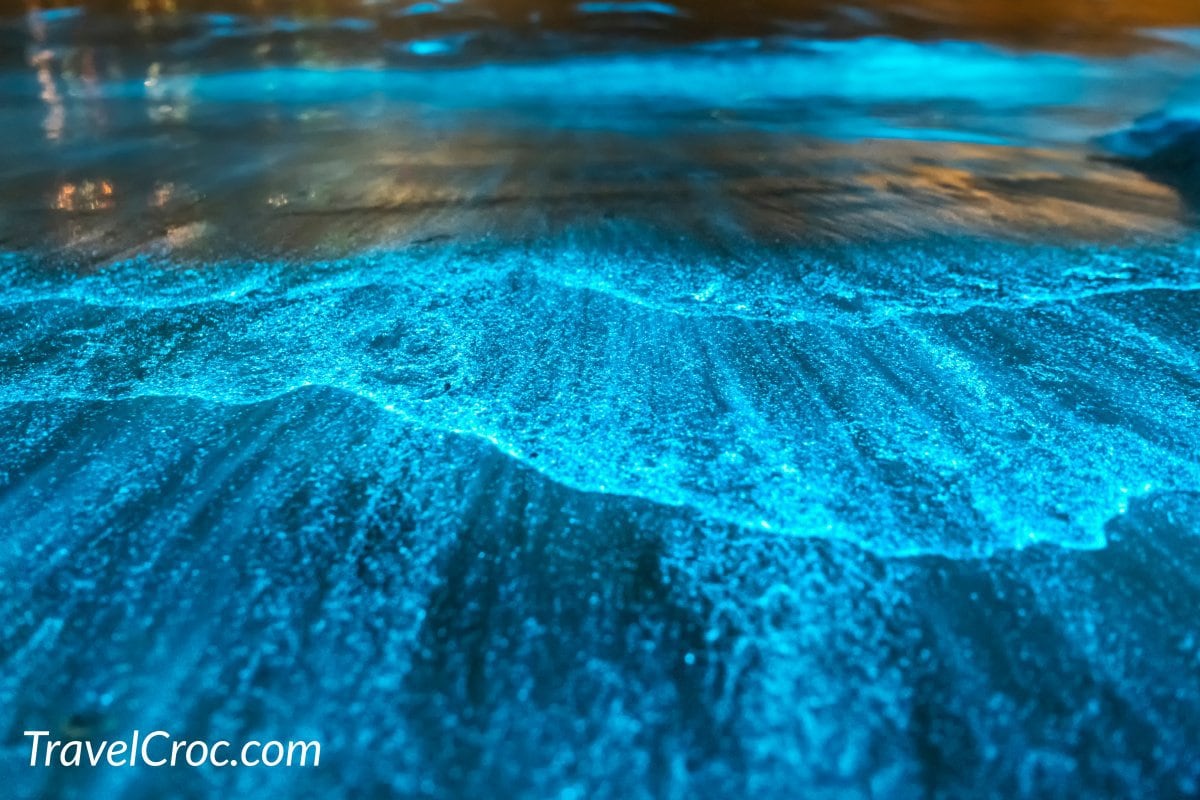
There are three bioluminescent bays in Puerto Rico; in the world, there are a total of five, which tells you they are not to be missed when you are looking for snorkeling in Puerto Rico. The bays are mentioned when we discuss actual places to tour.
I’ll also discuss what makes a bioluminescent bay, and why this is an experience not to be missed.
Bioluminescence is a unique marine concept, where marine life gives off a light emission. Much like fireflies, there are deep-sea fishes that will “glow” in the dark waters. The significant part about Puerto Rico’s bays is that it doesn’t take deep-sea fish to create this phenomenon.
There are squid and plankton that also have this chemical reaction. Phytoplankton, shrimp, squid, and fish use the chemical reaction as a defense mechanism against their predators. Even some algae can have a bioluminescent quality.
During the day, you will not be able to see this fantastic adaptation of nature. However, going on a snorkeling tour or going right off island beaches at night can ensure you not only see the bioluminescence but are a small part of it.
If you don’t like snorkeling at night, the other option is to take a boat tour of the bays where this occurs and watch from the railing. At least one company in Puerto Rico offers bioluminescent night kayaking so you can watch the mosaic of light that forms.
Let’s see what are some of the best spots to go snorkeling in Puerto Rico.
Recommended Reading:
- Amazing Places You Could Snorkel in The Whitsundays.
- Isla Grande Panama – Crystalline Beaches – Caribbean Holiday
Snorkeling Trip Destinations
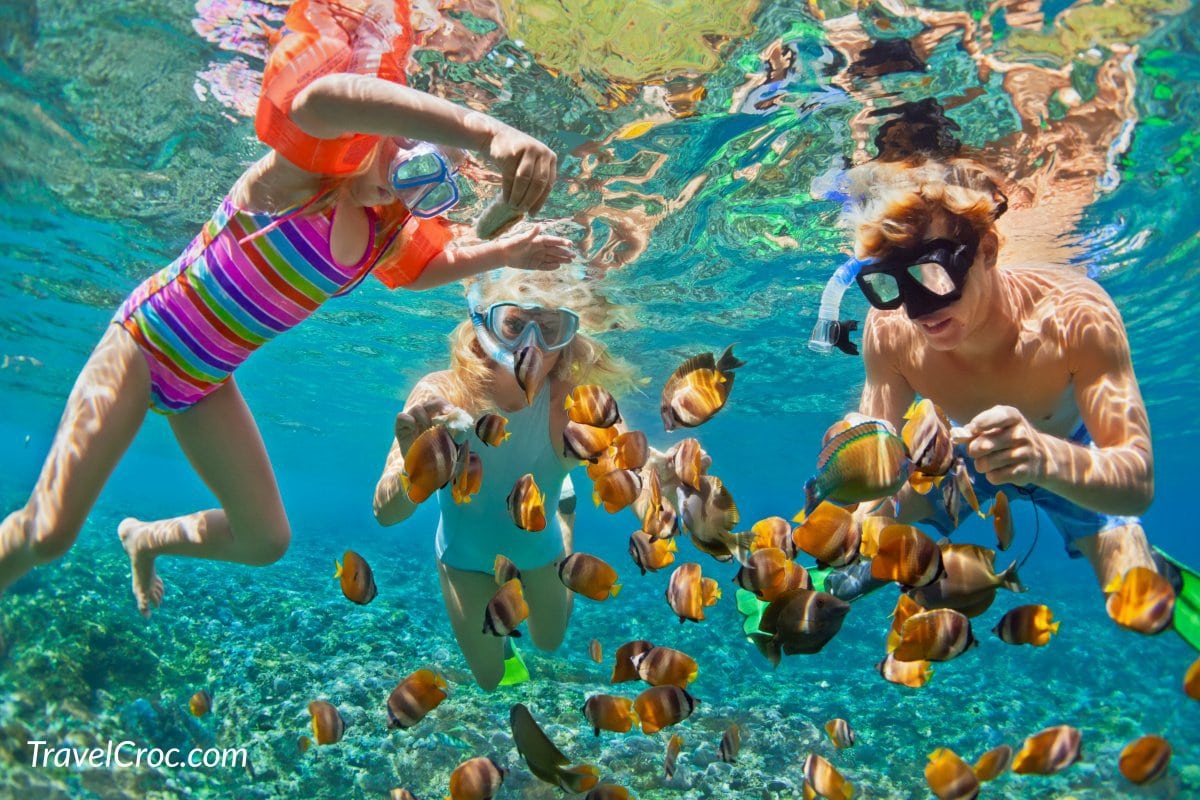
The best snorkeling in Puerto Rico is usually right from the various beaches on the main island, but you might want to check out some of the smaller islands and the boat trips you can take.
The reefs are accessible from beaches, but you also have some reasonably shallow reefs just off the coastline. So, a boat to reach some of the best snorkeling will be a little more than $15 to $20 a day to rent equipment and swim right from the beach.
Many beaches provide restrooms, and you can pay $1 per day for private shower stalls if you need to wash up before heading on to a different attraction. Some suggested beaches will be out of the way and lack food kiosks. In contrast, others will practically cause you to trip over them, with how many you will encounter.
Depending on the beach, you may also be able to pay for picnic shelters. One nice thing about some of the locales is camping. If you want an inexpensive trip where you can wake up and snorkel right out of your tent, Puerto Rico is great.
Some beaches allow you to have a permit and pay $10 per day to camp. All beaches are public in Puerto Rico, and lifeguards or local Caballos patrol many.
Here are a few of the boat locations worth mentioning:
1. Carlos Rosario Beach – found on Culebra Island to the east of central Puerto Rico Island, Carlos Rosario Beach is accessible by ferry. Take the forty-five-minute ferry ride from Fajardo to get to the island. The trip is $4.50 round trip. Once you arrive, walk west from Flamenco Beach. Flamenco Beach is usually more crowded, which is why Carlos Rosario is better. You can avoid the crowds and enjoy the mile-long reef.
2. Culebra Island – offers some of the best snorkeling beaches in Puerto Rico, including Flamenco and Carlos Rosario beaches. If Carlos Rosario Beach is too busy, just keep walking. Isla Culebra, also called Isla Chiquita, Ultima Virgen, or Snake Island, was once home to a US Naval Base. About 20% of the water is part of the national wildlife refuge and reserve.
It is a place for sea birds and sea turtles to be safe. Plenty of islanders make sure snorkelers adhere to the rules and have a great time exploring the reef. Manta rays are known to hang around the reefs and snorkeling locations of Culebra. Just be aware of their long tails with the stinger on end.
Manta rays are generally gentle, but when startled, they can be accidentally dangerous to you.
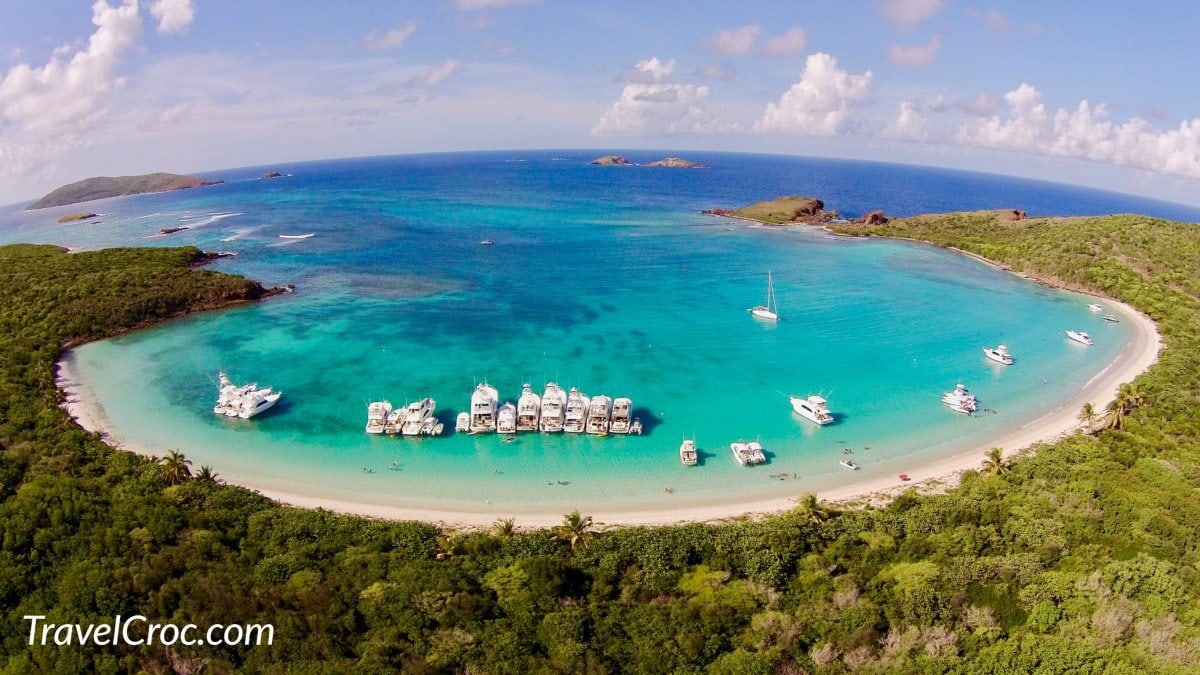
3. La Chiva Beach – again when snorkeling in Puerto Rico, sometimes you need a ferry ride from Fajardo. La Chiva Beach is on Vieques and home to the Vieques National Wildlife Refuge. It’s the largest refuge in the Caribbean. Vieques is known for its bioluminescent bay, the third one in Puerto Rico.
La Chiva is known for green sea turtles and diverse reef life. You will need to check that the beach is open depending on when you visit since sea turtles are endangered, and egg-laying time can create beach closures. Vieques are also known for the manta rays that hang out on the reefs and bury them under the sand.
Recommended Reading:
Best Beaches in Puerto Rico
4. Seven Seas Beach – Fajardo is home to at least one of the best places to snorkel in Puerto Rico. You may not have time or the inclination to get on the ferry, so start in Fajardo and visit Seven Seas Beach.
At the downtown marina, you can pick up snorkeling gear and then hop in the water. When you need a break, enjoy some shopping.
This beach is crescent-shaped with palm and almond trees for shade. The reef creates a wave break, which ensures easy surf for snorkeling. Lifeguards also take up a post from 9 am to 5 pm.
You will want to bring snacks since there are few on-beach amenities for food.
5. Boquerón Beach – Boquerón is 125 miles from San Juan to the southwest. Part of the island’s draw is the seaside village, but it is one of the most minor crowded locations for those who want to snorkel.
Like much of the snorkeling in Puerto Rico, Boquerón Beach offers reefs filled with various sea creatures, from sea anemones to reef sharks.
6. La Parguera – also on Boquerón Island, La Parguera is worth a visit. You will need more time to come to this area because it is a nature reserve. It is also considered a bioluminescent bay. The island has two of the three that are in Puerto Rico.
Imagine snorkeling at night, among a blue glow that lights the way around the reef, and you might understand the unique properties that La Parguera and two other locations in Puerto Rico can offer.
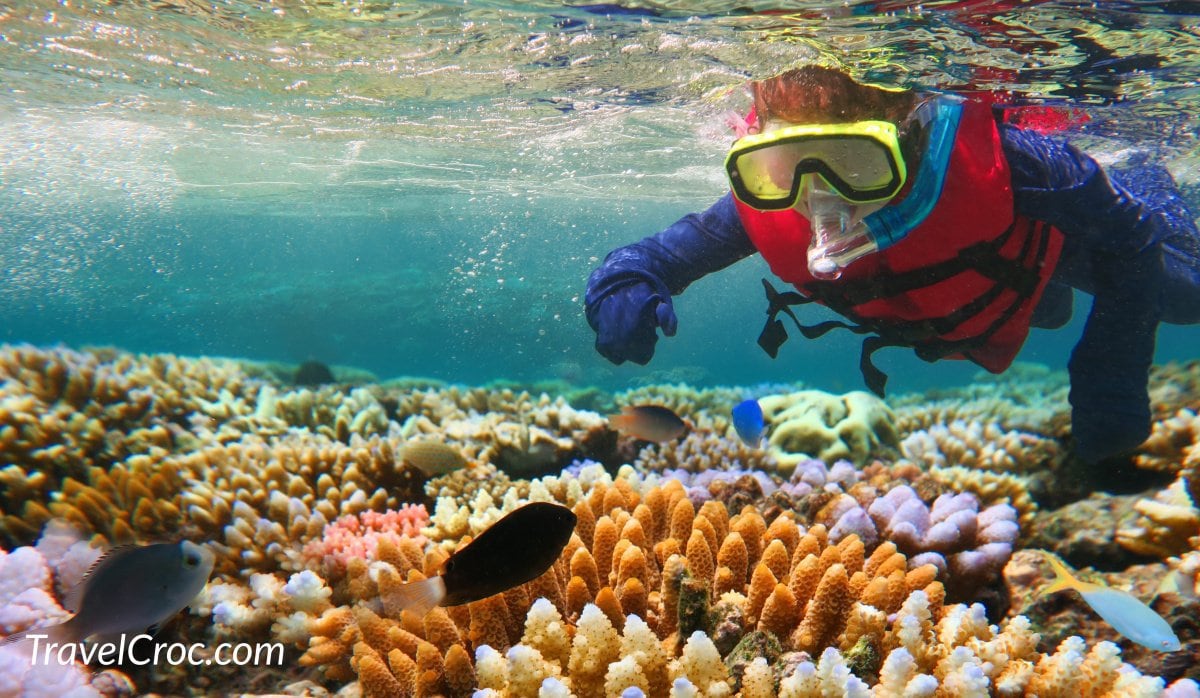
La Parguera is worth visiting for several reasons, mainly because it is a newer reef discovered in 2011. Part of the reef is accessible for snorkelers, but most of it is under 164 feet of water to over 330 feet. The reef is twelve miles long.
Its depth provides different corals and sponges, plus a more diverse marine life. Sea squirts of a turquoise color often catch divers’ eyes. There are also red, orange, and brown colored sponges. Grouper, reef sharks, and snappers typically enjoy this mesophotic coral reef.
7. Coffin Island Beaches – Coffin Island is eight miles from Puerto Rico’s main island. In the 1700s, a visiting French author thought the island looked like a cadaver within a coffin, so the name stuck. However, you may hear Isla Caja de Muertos from the locals. It is also an island filled with pirate legends.
Taking a day trip to this island, you can enjoy La Guancha Boardwalk, various hiking trails, and Pelican Beach. Pelican Beach is a Blue Flag Beach and is best for snorkeling. Don’t miss the lighthouse and cave.
8. Escambron Beach – Escambron is highly convenient for international travelers. Flying into San Juan, the beach is just a few steps away from Old San Juan. Snorkeling in Puerto Rico takes you away from city life, even if the urban center is so close.
As you dive under the water to check out the reef, you won’t think you are in any city but a vast landscape of magnificent corals and fish.
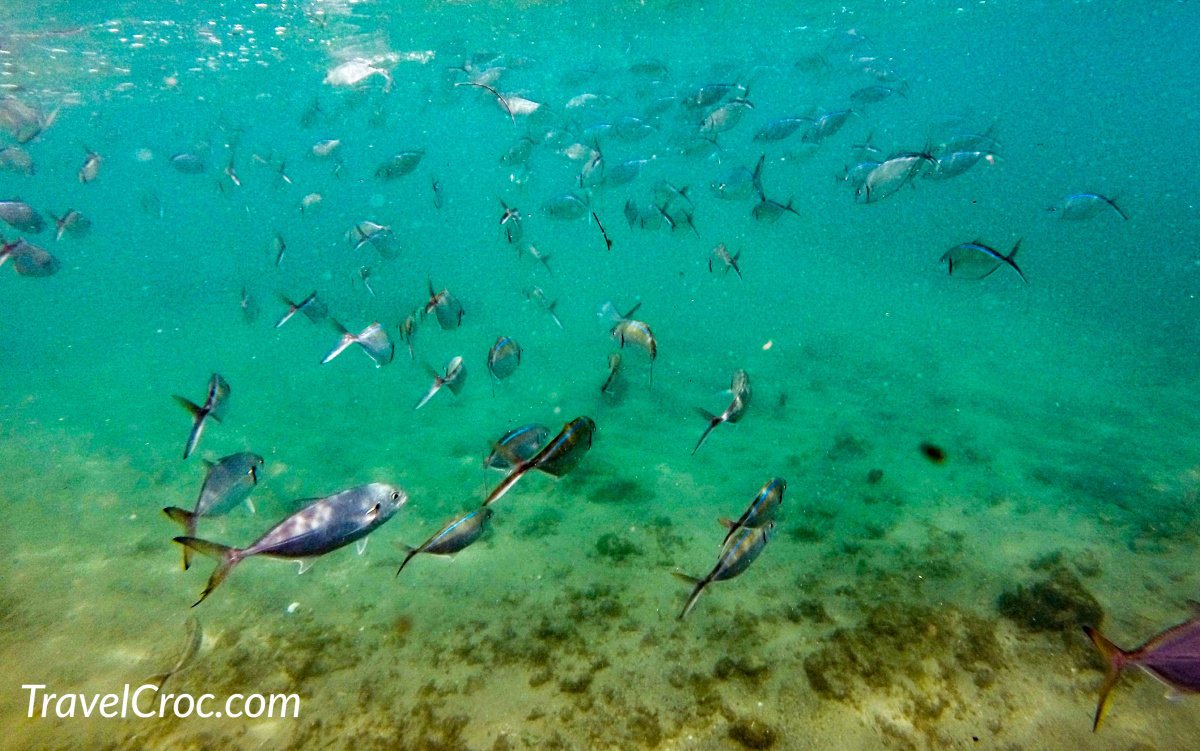
9. Steps Beach – part of the Tres Palmas Marine Reserve, you have stunning marine life awaiting your visit. Turtles, dolphins, whales, and lobster are just a few of the things you will be able to see when you dive into Tres Palmas Marine Reserve. Due to its distinction as a marine reserve, guided snorkeling tours are available.
However, you can also snorkel without a tour guide. Due to the island location, the summer months are the best time for a visit. As a result, the surf becomes calmer, ensuring you have the best time.
10. Did you think Gilligan’s Island was a myth made up for a TV show? There is actually an Island called Gilligan’s, which is five minutes from Guanica. Primarily an island of mangroves, several beaches, including one on the northwest side that prevents motorboats from coming too close to swimmers.
This is where you will want to snorkel. The coral formations are pristine, and due to a lack of surf, it is the best snorkeling in Puerto Rico for kids. The conditions are warm, calm, and shallow.
Consider renting a kayak and paddling around the island through the mangroves to get a different perspective after you have enjoyed snorkeling. Mangroves are havens for manatees.
The seagrass beds attract these beautiful creatures, which can be 10 feet long and weigh 1200 to 2000 pounds. Manatees are endangered, so you are not to touch or interact with them.
Most snorkelers are asked to swim away from manatees if they encounter them. You can observe them. Kayaking also allows you to view manatees from above water without endangering their lives.
See Fish In Puerto Rico
The Caribbean is vast, and fish do not always stay in one place. Most ichthyologists will tell you that reefs tend to attract certain types of tropical fish, so going to one reef in island places like Puerto Rico will ensure that you see several prolific types of fish.
While it would be nice to think that each reef has a unique assortment of tropical fish, chances are you will see snapper, grouper, tuna, mahi-mahi, tarpon, and wahoo. Some fish, such as eels, seahorses, young snappers, crustaceans, and mollusks, like the grassy sides of the islands.
Some of the more hidden treasures will include shrimp, lobster, octopus, and sharks. Nurse sharks like to hang out around reefs because their food source is nearby.
Nurse sharks are one of the few that can lie on the ocean floor without breathing issues, while other species need to constantly move. Reef sharks like blacktips will move around from one reef to the next in search of food. They are loners except during mating season, which often takes place in grassy areas.
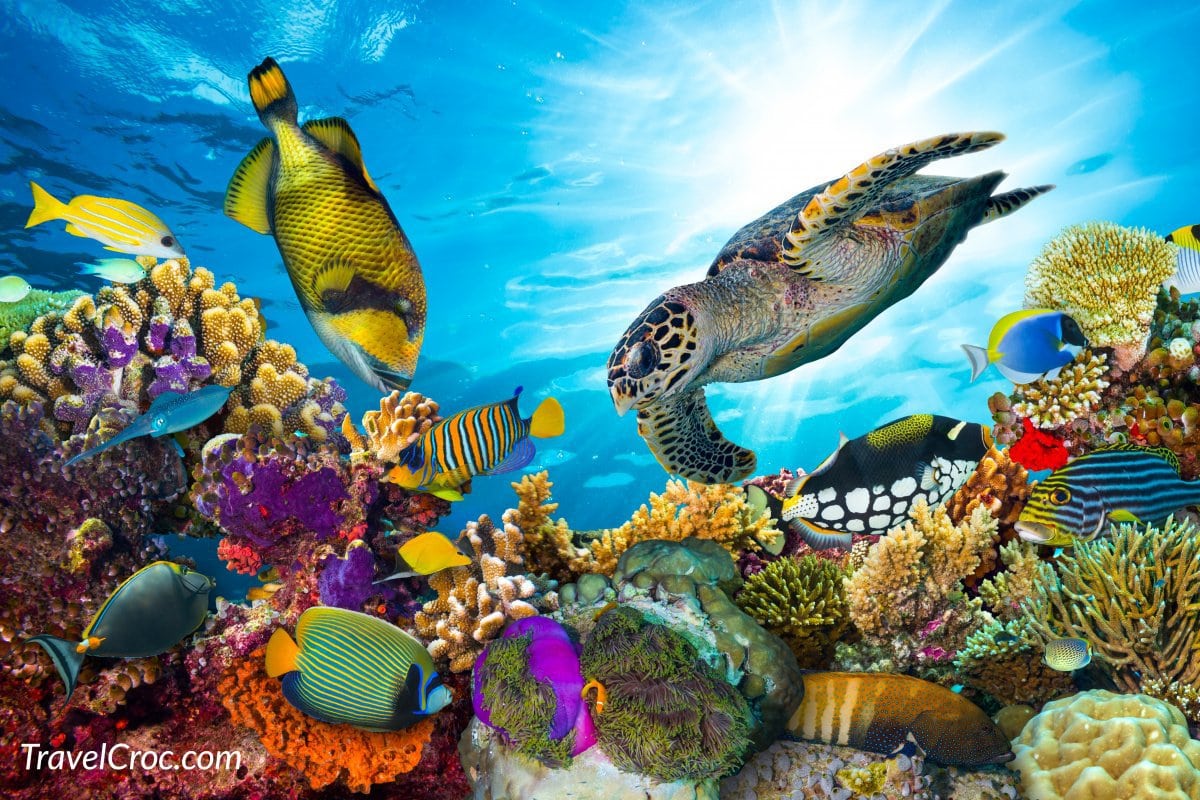
Dolphins can also visit the reefs. Most of the time, dolphins will follow their food, which includes schools of small fish, so make sure you keep your eyes looking around if any larger schools happen by the reefs.
Puerto Rico has a trench, a deeper part of the ocean where whales traverse from the southern hemisphere to the northern hemisphere. At least one pod of humpback whales can be spotted following the food source. There is a group of people who observe the marine mammals who frequent the waters.
They ask that whale watching tours keep a respectful distance, but it does mean you can take time and look for whales. Because whales like to stay in deeper water, it is harder to see the pod come closer to the islands while snorkeling, but it is not impossible.
Recommended Reading:
Why Should You Snorkel in Puerto Rico?
You should have a bit of understanding of why I think snorkeling in Puerto Rico is not to be missed. Puerto Rico has plenty to offer snorkelers with bioluminescent bays, manatees living in mangroves, and numerous shallow coral reefs filled with sponges and clownfish.
It won’t matter if you have never snorkeled before because there are plenty of reef choices to make. You can stay near shore just off Old San Juan for shallow waters or head to Gilligan’s Island for a protected swim area great for kids and new snorkelers.
Every Puerto Rican Island has at least one snorkel gear rental shop if not five. You can rent equipment for your entire stay or rent it daily. In addition, most resorts will have rental equipment that you can keep in your room whenever the mood strikes you to snorkel.
You might consider investing in your own gear, too, if you plan on snorkeling the entire time or visiting other reefs in the future. Snorkeling gear is inexpensive and offers you numerous choices in fin, mask, and snorkel style.
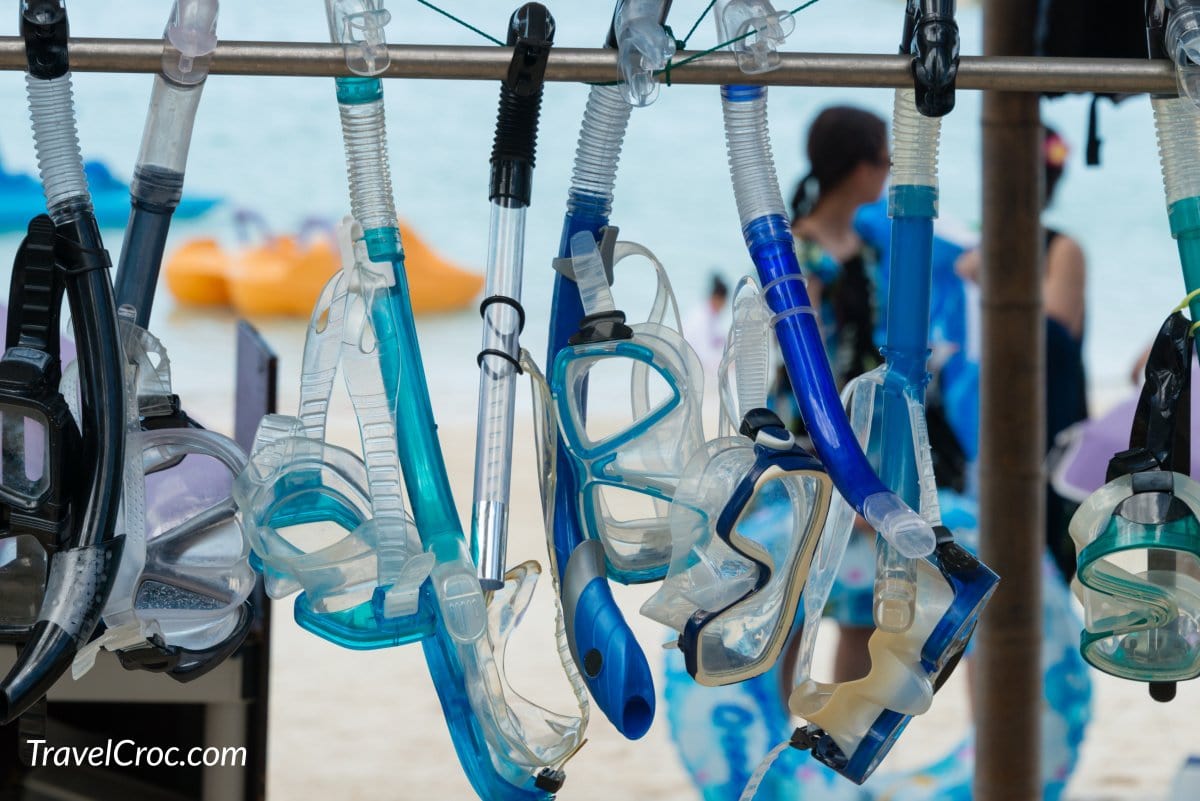
I prefer the vented snorkel that helps me stay underwater longer with less pressure to clear the snorkel when I reach the surface.
It is a good idea to plan your trip before you arrive just to make sure you have alternative snorkel spots if the currents are against you or a place is too busy. The list of over ten snorkel places is just a starting point to help you plan.
Puerto Rico offers more than snorkeling, but really, who wants to stay out of the water when you can experience marine life? So whether you night snorkel in a bioluminescent bay or take shallow snorkel trips with the family, you won’t regret snorkeling in Puerto Rico.
We would love to hear from you!
Have you ever been snorkeling in Puerto Rico? What was your experience like? Do you have any tips for anyone looking to go snorkeling? Comment below and let us know. Thank you for reading!
